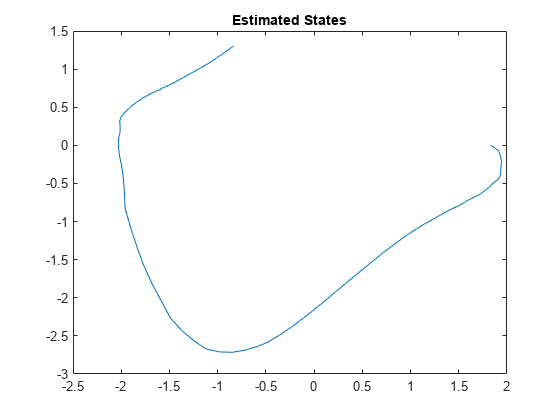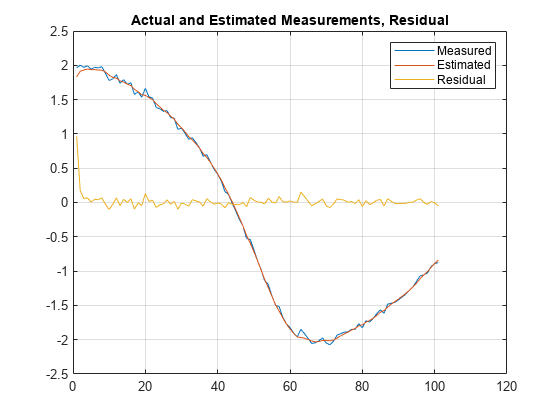residual
Return measurement residual and residual covariance when using extended or unscented Kalman filter
Syntax
Description
The residual command returns the difference between the
actual and predicted measurements for extendedKalmanFilter and unscentedKalmanFilter objects. Viewing the residual provides a way for
you to validate the performance of the filter. Residuals, also known as
innovations, quantify the prediction error and drive the
correction step in the extended and unscented Kalman filter update sequence. When using
correct and predict (System Identification Toolbox) to update the estimated Kalman filter state, use the
residual command immediately before using the
correct command.
[ returns the
residual Residual,ResidualCovariance]
= residual(obj,y)Residual between a measurement y
and a predicted measurement produced by the Kalman filter obj.
The function also returns the covariance of the residual
ResidualCovariance.
You create obj using the extendedKalmanFilter or unscentedKalmanFilter commands. You
specify the state transition function f and measurement function
h of your nonlinear system in obj. The
State property of the object stores the latest estimated
state value. At each time step, you use correct
and
predict together to update the state
x. The residual s is the difference
between the actual and predicted measurements for the time step, and is expressed as
s = y -
h(x). The covariance of the residual
S is the sum R +
RP, where R is
the measurement noise matrix set by the MeasurementNoise
property of the filter and RP is the state
covariance matrix projected onto the measurement space.
Use this syntax if the measurement function h that you
specified in obj.MeasurementFcn has one of the following forms:
y(k) = h(x(k))for additive measurement noisey(k) = h(x(k),v(k))for nonadditive measurement noise
Here, y(k), x(k), and
v(k) are the measured output, states, and measurement noise
of the system at time step k. The only inputs to
h are the states and measurement noise.
[
specifies additional input arguments if the measurement function of the system
requires these inputs. You can specify multiple arguments.Residual,ResidualCovariance]
= residual(obj,y,Um1,...,Umn)
Use this syntax if the measurement function h has one of the following forms:
y(k) = h(x(k),Um1,...,Umn)for additive measurement noisey(k) = h(x(k),v(k),Um1,...,Umn)for nonadditive measurement noise
Examples
Input Arguments
Output Arguments
Version History
Introduced in R2019b
See Also
correct | predict | extendedKalmanFilter | unscentedKalmanFilter

